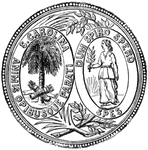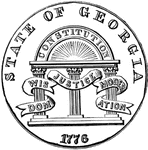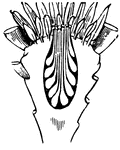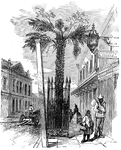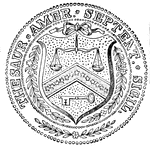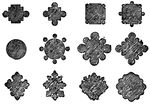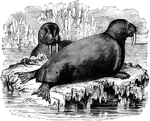![Rodolphus Agricola (Phrisius) (?February 17, 1444, August 28, 1443?[1] – October 27, 1485) was a pre-Erasmian humanist of the northern Low Countries, famous for his supple Latin and one of the first north of the Alps to know Greek well. Agricola was a Hebrew scholar towards the end of his life, an educator, musician and builder of a church organ, a poet in Latin as well as the vernacular, a diplomat and a sportsman of sorts (boxing). He is best known today as the author of De inventione dialectica, as the father of northern European humanism and as a zealous anti-scholastic in the late-fifteenth century. Born at Baflo, in the Dutch province of Groningen, Agricola was originally named Roelof Huusman.](https://etc.usf.edu/clipart/4300/4301/arigicola_1_mth.gif)
Rodolphus Agricola
Rodolphus Agricola (Phrisius) (?February 17, 1444, August 28, 1443?[1] – October 27, 1485) was a pre-Erasmian…
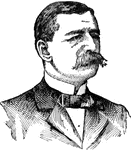
Salomon Auguste Andrée
(1854-1897) Swedish balloonist lost while trying to reach the North Pole in 1897.

Solomon's Seal Root
In some perennial herbs, prostrate stems or branches underground are thickened with this store of nourishment…
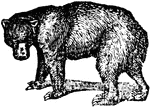
Black Bear
The Black bear inhabits every wooded district in North America, and eats primarily vegetation.
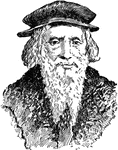
Sebastian Cabot
Italian navigator and cartographer. Sebastian Cabot (c. 1474 – c. December 1557) was an Italian explorer,…
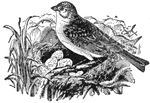
Yellowhammer
The yellow hammer, or yellow bunting; a bird widely distributed over Europe and North America

Catfish
Catfish are found in lakes and streams of North America, usually at muddy bottoms. Catfish have a large…
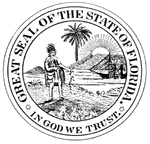
Florida Seal
The former Great Seal of Florida, featuring an indian, palm tree, the sun, and some uncharacteristic…

Drilling Troops
The influx of Northern regiments of troops into Washington during the early days of the war rendered…

Fort Hatteras
View of the camp of the twentieth Indiana Regiment; also of Fort Hatteras and the anchorage at Hatteras…

Evacuation of Corinth
Evacuation of Corinth, Mississippi- burning of stations, warehouses and supplies- entry of Federal Troops.…

United States Arsenal at Charleston
At the time this picture was drawn the handsome arsenal of the government of Charleston, South Carolina,…
Rappahannock
"The city of Fredericksburg, VA., from the North side of the Rappahannock- from a sketch by our special…
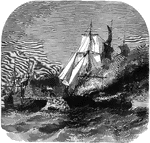
Harvey Birch
"Burning of the American merchantman "Harvey Birch," of New York, Captain Nelson, in the British Channel,…
!["First and last review of the First Regiment, South Carolina [African American] Volunteers, on Hilton Head, S. C., under Colonel Fessenden, U. S. A., June 25th, 1862. Our correspondent at Hilton Head wrote us: "I witnessed the parade entire, as well as the company drills in the manual of arms, etc., afterward, and I must acknowledge my complete surprise at the discipline and even vim evinced by the sable crowd. Dressed in the regulation uniform of the United States Army, tall and strong men generally speaking, they, considering that the regiment had not been fully armed but about ten days, spoke well for officers and men."" — Frank Leslie, 1896](https://etc.usf.edu/clipart/11000/11043/1stregiment_11043_mth.gif)
First Regiment
"First and last review of the First Regiment, South Carolina [African American] Volunteers, on Hilton…

Fort Hatteras
"General view of Forts Hatters and Clark, N. C., captured on the 29th of August, 1861, by the Federal…

Hilton Head
"Expedition to Port Royal- Government buildings erected on Hilton Head, S. C., by the Federal forces…
!["A detachment of the First South Carolina [African American] Federal Volunteers, under the command of Colonel Beard, repelling the attack of Confederate troops in the vicinity of Doboy River, GA." —Leslie, 1896](https://etc.usf.edu/clipart/11200/11251/doboy_11251_mth.gif)
Doboy River
"A detachment of the First South Carolina [African American] Federal Volunteers, under the command of…
Hilton Head
"Expedition to Port Royal- Government buildings erected on Hilton Head, S. C., by the Federal forces…

Fort Thompson
"View of New Berne, N. C., from the interior of Fort Thompson after its capture by the Federal forces-…

Galveston
"Shelling of the batteries at Galveston by the United States war steamer South Carolina, on…

James Island
"Repulse of the Confederates at James Island, near Charleston, S. C., June 10th, 1862, in the attempt…

Schooners
"Removing sunken schooners from Core Sound, N. C., placed to obstruct the passage of the Federal gunboats,…

Rolla Camp
"Encampment of the Federal army near Rolla, Mo. The city of Rolla has been famous since the death of…

Port Royal Ferry
"Successful attack of a detachment of the Federal forces, under General Stevens, supported by four gunboats…

View of Strasburg
"View of the town of Strasburg, valley of the Shenandoah, occupied by the Federal forces under General…

Admiral Silas H. Stringham
"Rear admiral Stringham, born in Middletown, Orange County, N. Y., November 7th, 1798; died in brooklyn,…

General John G. Foster
"General Foster, born in Whitefield, N. H., May 27th, 1823, died in Nashua, H. H., September 2nd, 1874,…

Federal Hill
"Federal Hill, Baltimore, taken from the North side basin, occupied by the Federal Troops."— Frank…
Fort Clinch
"Exterior view of Fort Clinch, on Amelia Island, Fla., commanding the Harbor of Fernandina, captured…
Fort Clinch
"Interior view of Fort Clinch, on Amelia Island, Fla., commanding the Harbor of Fernandina, captured…

Common Seal
"The ground-color of the hair or skin, when this animal is alive and dry, is pale whitish-gray, with…
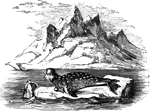
Hooded Seal
"Also called the Crested Seal, remarkable for possessing, about two inches from te extremity of the…
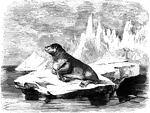
Sea Bear
"It is the size of a large bear; girth at the sholder, five feet, near the tail, twenty inches; fur…
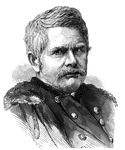
General Edward O. C. Ord
"General Ord, born in Cumberland, Md., October 18th, 1818, died in Havana, Cuba, July 22nd, 1883, was…

General Hospital Interior
"United States General Hospital, Hilton Head, S. C., interior. The United States General Hospital at…

Battle of New Berne
"Battle of New Berne- Lieutenant Hammond capturing Colonel Avery, of South Carolina, while he was endeavoring…
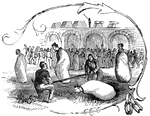
Hurdle Sack Race
"Federal soldiers participating in a hurdle sack race. Thanksgiving festivities at Fort Pulaski, Ga.,…
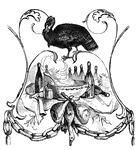
Thanksgiving Dinner
"Thanksgiving dinner. Thanksgiving festivities at Fort Pulaski, Ga., Thursday, November 27th, 1862.…
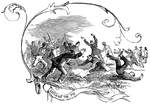
Catching the Pig
"Soldiers playing 'catch the pig.' Thanksgiving festivities at Fort Pulaski, Ga., Thursday, November…

Burlesque Dress Parade
"Soldiers participating in a burlesque dress parade. Thanksgiving festivities at Fort Pulaski, Ga.,…

Thanksgiving Ball
"Soldiers and women participating in a Thanksgiving Ball. Thanksgiving festivities at Fort Pulaski,…

Wheelbarrow Race
"Soldiers aparticipating in a wheelbarrow race. Thanksgiving festivities at Fort Pulaski, Ga., Thursday,…
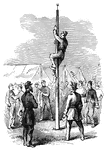
Climbing Pole
"Soldiers climbing up a greased pole. Thanksgiving festivities at Fort Pulaski, Ga., Thursday, November…



